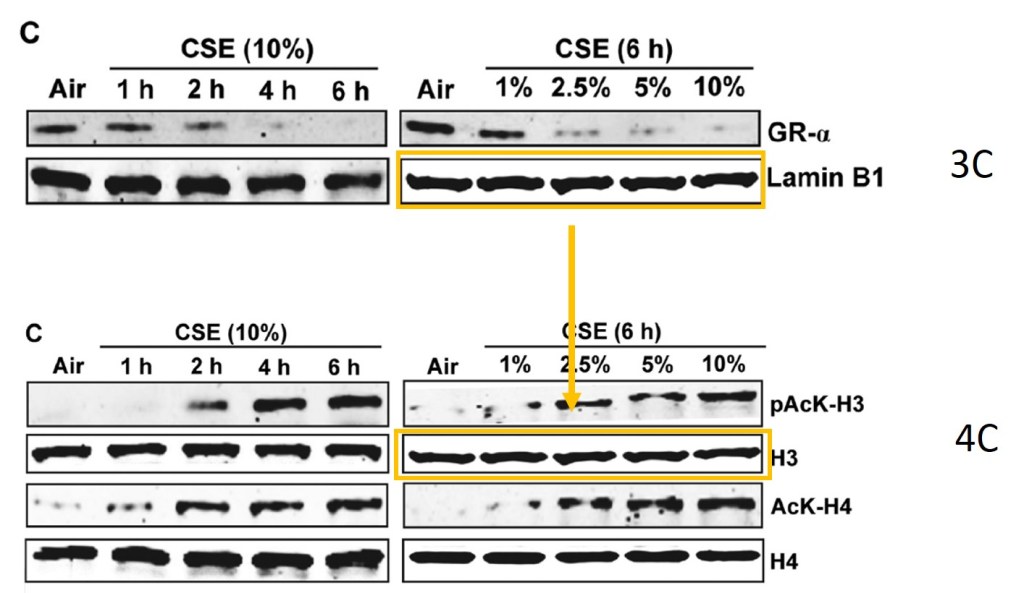As reported by Retraction Watch, Raju Reddy and Aravind Tarugu Reddy, two clinical lung researchers from the University of Pittsburgh in USA, are suing the Journal of Biological Chemistry (JBC) and its publisher American Society for Biochemistry and Molecular Biology (ASBMB), over a retraction of their fraudulent paper. A retraction which they themselves even apparently admit to have initiated.
Update 16.01.2021: The lawsuit has been settled on 12.01.2021, according to court records. More at the end of this article.
It all does sound very appalling and unsavoury, but the unfortunate reality is that ASBMB now has to pay lawyers to defend itself in court, even if the two appalling and unsavoury Reddys should stand no chance of winning or even settling that lawsuit. After all, a retraction as such is not slanderous, simply because in most cases retractions happen upon authors’ request. In the legal sense a voluntarily action cannot be deemed slanderous, because you cannot slander yourself.
Suing one’s critics is a popular activity among dishonest scientists, I myself was sentenced in court several times already, and get threatened by lawyers regularly. But this is one of the very rare cases when authors actually sue a journal over a retraction (the other known case being of Brazilian diabetes researcher Mario Saad, read about him here). Not just any journal: JBC with its ASBMB is by far the most ethical, zero-tolerance biomedical publisher out there, hated by all fraud-enabling scientists and scholarly publishers. Let’s hope that their Schadenfreude is in vain, that Reddys’ attack backfires for them badly and ends in a lost court case and a sack, and that JBC will emerge even stronger.

Retraction Watch writes, highlight mine, but typos (including Tarugu Reddy’s name) all theirs:
“The suit, filed in Allegheny County, Penn., claims that an investigative committee at Pitt cleared the two researchers of misconduct in February 2016. However, in what came as a “great surprise” to the authors, in April 2016 the school reopened the matter because research integrity officials at the VA had “lingering reservations” about a particular figure (labled 5E) in the paper.
That led to renewed inquires about the paper, and whether Targugu Reddy had misused the figure in question. Eventually, according to the suit, Pitt officials concluded that no misconduct had occurred. But VA investigators disagreed, and in May 2018, their joint investigation with Pitt found that Targugu Reddy had indeed fudged the image. Targugu Reddy was ordered to contact the JBC and request the journal retract the article, which it did, but not before conducting its own investigation into Figure 5 and other images, as well. “
Even the law firm representing the two Reddys issued a press release. They insist JBC issued a “false and defamatory statements which accuse Mr. Tarugu and Dr. Reddy of falsifying data in an academic research article”. Namely this one:
SP Lakshmi, AT Reddy, Y Zhang, FC Sciurba, RK Mallampalli, SR Duncan, Raju C. Reddy Down-regulated peroxisome proliferator-activated receptor γ (PPARγ) in lung epithelial cells promotes a PPARγ agonist-reversible proinflammatory phenotype in chronic obstructive pulmonary disease (COPD) The Journal of biological chemistry (2014) doi: 10.1074/jbc.m113.536805
From what I understand, unless the lawyers have a way to bribe or otherwise own a judge, it is not clear how this factual and neutral retraction notice from January 2019 is supposed to say what they accuse it of:
“This article has been retracted by the publisher. The right pAcK-H3 and H3 immunoblots from Fig. 6A were reused in Fig. 1A as PPARγ. The right Lamin B1 immunoblot from Fig. 3C was reused in Fig. 4C as the right H3 immunoblot. In Fig. 5E, the first lane from the lower β-actin immunoblot was reused in the right pMSK1 immunoblot.”
However, the Reddys dispute these stated facts of gel band reuse, even if those were apparently confirmed by their own unversity’s investigation. Retraction Watch article instead presents experts:
“[the Reddys, -LS] argue in the suit that their own analysis showed the figures to be “unique and distinct.” That view purportedly gets some support by two former ORI officials, Alan Price and John Dahlberg, who consulted on the case for the plaintiffs and in letters appended to the suit said they did not think JBC should retract the paper.
One might be forgiven to suspect that Retraction Watch might have been pitched by Reddys’ lawyers, who kindly supplemented the journalists with ready expert opinions, to save them the investigative work. John Dahlberg used to be Office of Research Integrity (ORI) Deputy Director, where he was in charge of Investigative Oversight, together with his Associate Director Alan Price, who now offers his expertise as research integrity consultant, for a price. That these two unscrupulous and greedy old men now help Reddys to sue JBC, against clear evidence of data manipulations, is yet another proof that our attention-hogging Research Integrity Establishment has no other principles but self-promotion and money. No wonder ORI basically acts as a kind of Eid butcher, performing ritual sacrifices of scapegoats upon requests from their customer universities in USA. So far, the Reddys are fully supported by their University of Pittsburgh, and this is why ORI will be fully on their side. Until the wind turns.

The bizarre lawsuit is unlikely to bring any benefit to the Reddy, they might very well instead achieve the opposite. Image integrity sleuths are now all over Reddy papers, and they found more stuff worthy of retractions. The question is: will other journals and publishers dare to do the decent thing? Or will they fear getting sued also, while some even feel Schadenfreude about the situation which JBC is now in?
Let’s help the Reddys get what they deserve.
Before Raju Reddy came to Pittsburgh, he established himself in Michigan, mentored by the lung medicine professor Theodore Standiford. What would the former ORI directors Dahlberg and Price see here? That these b-actin gel bands are different because Reddy’s money says so? Or that it’s irrelevant, being “just loading controls“?
R Reddy, VR Narala, VG Keshamouni, JE Milam, MW Newstead, TJ Standiford Sepsis-induced inhibition of neutrophil chemotaxis is mediated by activation of peroxisome proliferator-activated receptor-{gamma} Blood (2008) doi: 10.1182/blood-2007-12-128967

The society journal Blood is know not to give a flying toss for even much worse offences, so no trouble here for Reddy. With Standiford, Reddy published also this artwork:
RC Reddy, GH. Chen, MW Newstead, T Moore, X Zeng, K Tateda, TJ Standiford Alveolar macrophage deactivation in murine septic peritonitis: role of interleukin 10 Infection and Immunity (2001) doi: 10.1128/iai.69.3.1394-1401.2001

Dahlberg & Price would probably say this reuse was OK because at least one of the two samples bears the same label. The issues in the next paper are even worse, but with the society publisher FASEB one cannot be sure if they bother or not.
AT Reddy, SP Lakshmi, Y Zhang, RC Reddy Nitrated fatty acids reverse pulmonary fibrosis by dedifferentiating myofibroblasts and promoting collagen uptake by alveolar macrophages FASEB journal (2014) doi: 10.1096/fj.14-256263
Some gel bands seem to have been creatively reused, while the blue DNA staining in Figure 5D comes from somewhere else altogether. But I am sure Dahlberg and Price would approve of that.
Now, there is no reason to insinuate that Raju Reddy would ever allow any proper gel loading controls to happen under his watch. Look at this paper, for example.
MR Smith, SR Gangireddy, VR Narala, CM Hogaboam, TJ Standiford, PJ Christensen, AK Kondapi, RC Reddy Curcumin inhibits fibrosis-related effects in IPF fibroblasts and in mice following bleomycin-induced lung injury American journal of physiology. Lung cellular and molecular physiology (2010) doi: 10.1152/ajplung.00002.2009

In Figure 3A, the band shapes prove that a-SMA and GAPDH loading control are two separate gels. And in Figure 4B, never mind the band shapes, pSmad3 has 7 lanes, while GAPDH and the legend makes you expect 8 lanes. It passed peer review, probably because nobody was looking at the figures anyway.
Nowadays, some editors and reviewers are suspicious of authors using loading control libraries. In their PLOS One paper from 2016, the Reddys therefore vouchsafed to have always probed the same gel for equal loading, even provided overlay proof. It didn’t always match though.
AT Reddy, SP Lakshmi, RR Muchumarri, RC Reddy Nitrated Fatty Acids Reverse Cigarette Smoke-Induced Alveolar Macrophage Activation and Inhibit Protease Activity via Electrophilic S-Alkylation PLoS ONE (2016) doi: 10.1371/journal.pone.0153336
The figure 5 is quite peculiar. The authors created a merge overlay, which is a statement that both antibody analyses were performed on the same gel. But the bands do not overlay. Meaning, the Biotin gel actually lacks a loading control. Would you trust the Reddys here?

Especial since there is evidence that someone was making up numbers in that same PLOS One paper?

PLOS One is already on that case, as the Editor-in-Chief Jörg Heber announced on Twitter.
There sure must be more to find, anyone interested?
Update 16.01.2021
The lawsuit has been settled on 12 January 2021, according to court records, the case is closed. ASBMB, the owner of JBC (which is now published by Elsevier), withdrew their counterclaim also. It is not clear what Reddy achieved with the settlement, maybe just money, which is a major victory in itself. His papers are not likely to be de-retracted, a source indicated to me that Reddy doesn’t work at Pittsburgh anymore. His Veterans’ Hospital profile screenshot above has been deleted, although the University of Pittsburgh lists Reddy as “visiting associate professor” still.
The settlement conference took place on 22 December 2020 via Zoom.
What Reddy achieved now on behalf of every single academic cheater is a precedence that retractions can be successfully retaliated against in court, imposing prohibitively heavy costs to publishers. The times when JBC used to rigorously retract fraudulent papers, are likely over, especialy since Elsevier is its new publisher.
This court settlement will now make science retraction-free.

Donate!
If you are interested to support my work, you can leave here a small tip of $5. Or several of small tips, just increase the amount as you like (2x=€10; 5x=€25). Your generous patronage of my journalism, however small it appears to you, will greatly help me with my own legal costs.
€5.00








Elisabeth Bik found more:

Venkata R Narala , Monica R Smith , Ravi K Adapala , Rajesh Ranga , Kalpana Panati , Bethany B Moore , Todd Leff , Vudem D Reddy , Anand K Kondapi , Raju C Reddy
Curcumin is not a ligand for peroxisome proliferator-activated receptor-γ
Gene therapy & molecular biology (2009)
https://pubpeer.com/publications/A9DC6AA52DEF439C9E14C4BDDF0A09#2
LikeLike
LikeLike
Do not waste time in digging out old papers. Focus on papers withing 6 years, as the NIH rule.
LikeLiked by 1 person
Pingback: Interview with JBC research integrity manager Kaoru Sakabe – For Better Science
Pingback: How USA embraced research fraud: review of two books – For Better Science
Shame about JBC sinking into the Elsevier swamp. Maybe a job for Reddy as editor?
LikeLike
gel actually lacks a loading control: this is something which does not bother neither journals, DFG, nor university research integrity boards in Germany
LikeLike
Pingback: Szyf and Rabbani: old gels evil, new genomics cool – For Better Science
Pingback: ORI Fail – For Better Science